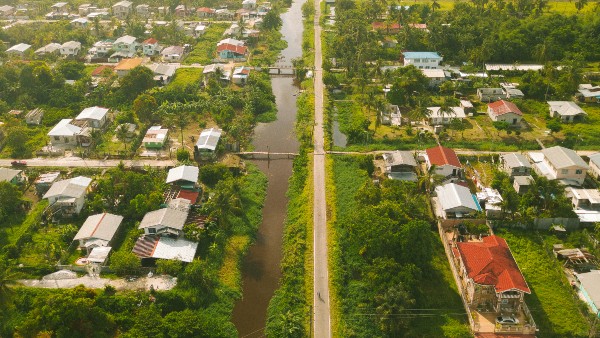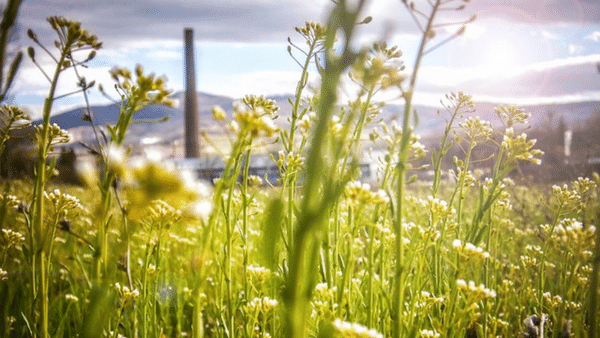Nuclear energy is clean, green and brings energy security in an uncertain world, but are we ready to deliver?
COP26 was a pivotal moment for a number of reasons, 1.5C kept alive? Debatable. But one reason that stuck out to many from the scientific community was the large presence of pro-nuclear activists. The nuclear for climate presence was led by the UK Nuclear Institute Young Generation Network, passionate volunteers many of whom are young professionals working in nuclear.
But why fight for a cause like nuclear when historically greens and entire countries have fought tooth and nail against it? Well, the tides are turning; Finland’s Green Party recently endorsed nuclear power, prominent scientists and advocates call to follow the science, and more than 30 countries are planning or establishing nuclear programmes. The UK, for example, has announced plans to approve a reactor a year till 2030, ensuring that 25% of electricity would come from nuclear in 2050. Japan is switching its reactors back on in the face of climate change and skyrocketing energy prices, China is planning a whopping 150 reactors in the next 15 years, and the US and Canada are developing a range of future generation nuclear technologies.
Nuclear is one of the safest and cleanest forms of energy we have (even when you include accidents like Chernobyl), comparable with wind power, so development of it alongside renewables is a must. A recent UN report showed that nuclear in fact had the lowest lifecycle carbon emissions (about 6gCO2e/kWh) of any energy generation technology, and about half that of off-shore wind. In fact in 2019, a Swedish nuclear power plant was verified to have lifecycle emissions of less than 3gCO2e/kWh, making it one of the cleanest sources of energy.
But what about the waste? I’ll answer with a question. Where do your current opinions of nuclear waste come from? For me, it was The Simpsons! But nothing could be further from the truth.
Nuclear waste generated from civil nuclear power plants has never harmed anyone – it is a very well controlled waste with every gram accounted for and kept secure by the United Nations International Atomic Energy Agency. Nuclear waste volumes are tiny. If all of your lifetime energy came from nuclear, the waste would fit inside a small aluminium drink can. That’s orders of magnitude less than toxic waste that goes to landfill, which does not decay with time.
If that wasn’t enough, there is a lot of cutting edge technology which has already been demonstrated to reduce our waste footprint, for example re-use in advanced reactors, use in medical isotopes and even in diamond batteries. More investment in R&D will take this even further.
And finally, for anything we can’t reuse, or prevent from being created, there is disposal. The lowest in the waste hierarchy. A report in 2021 for the EU taxonomy from the EUs Joint Recent Centre (JRC) said: ‘There is broad scientific and technical consensus that disposal of high-level, long-lived radioactive waste in deep geologic formations is … considered as an appropriate and safe means of isolating it from the biosphere for very long time scales.’
Now, nothing is perfect, whether it’s the toxic metals found in solar panels, or unabated carbon emissions pouring into our atmosphere from fossil fuels. Everything comes with a cost, and when it comes to a solid waste form that hasn’t harmed people, compared to the unmitigated, invisible emissions that cause nine million premature deaths a year, the answer is clear.
A lot of the benefits of nuclear are due to the huge energy density of its fuel. It needs fewer materials, less mining, and less land than any other energy source. This means less embodied carbon in the components that make up a nuclear power plant and more space for nature. It gives us the option of thinking about abundance, allowing us to prosper whilst having a minimal impact on our environment and atmosphere.
So what’s next? In a nutshell, encourage people to join the clean energy revolution.
A just transition is essential if we’re going to have prosperity for all. Nuclear power plants bring high-skilled, local jobs. Small Modular Reactors (SMRs) allow for distributed and less centralised energy networks, putting the power into the hands of communities. The future is bright if we accept nuclear, which is rapidly happening according to this UK YouGov poll. Nuclear is now the joint most supported form of energy generation, alongside wind power. But for all of these clean energy sources, we need to make sure there is a pipeline of talented people ready to scale them up to the level required.
In the UK, it is estimated that well over 7,000 people will need to enter the nuclear industry per year until 2027. This includes everything from nuclear new build, to the end of the lifecycle; where legacy nuclear sites across the country are regenerated and transformed for their next planned use.
Hinkley Point C is the flagship of UK new-build, but it is only the first of many nuclear projects to come. Under the Government’s new energy security strategy, a number of new reactors are to be built and operational by 2050. This is a huge workload, and it is heavily front-loaded onto the planning and approval stages. Although Britain has done well to prepare a vibrant young workforce for the challenge of Hinkley Point C, these higher ambitions demand more than simply scaling up what has already worked.
The UK's new-build programme is highly ambitious and so must be industry’s approach to meeting the needs for the people to make it happen. It demands a pro-active approach that will broaden and strengthen existing STEM pipelines and compete in the burgeoning European new build marketplace. To avoid too much internal competition the UK will need collaboration between nuclear projects and with other low-carbon energy sources. All of this hinges on coordination from the newly announced Great British Nuclear body and a clear roadmap from the Government.
By Arun Khuttan, with support from Jeremy Gordon and Callum Thomas. Arun founded the #NetZeroNeedsNuclear campaign and co-led the UK-YGN and global Nuclear for Climate movement at COP26. Arun volunteers his time as the Marketing and Communications Officer for the Nuclear Institute Young Generation Network. Callum Thomas is the CEO and Founder of Thomas Thor, a recruitment, executive search and HR consulting organisation dedicated to the mission of building and sustaining a diverse workforce in the global nuclear industry. Jeremy Gordon is Fluent in Energy. With 16 years of communication experience in the international nuclear industry, Jeremy supports clients who want to humanise nuclear energy and improve its public image so that it can play a full role in human development and environmental protection.

Become an RSA Fellow
The RSA Fellowship is a unique global network of changemakers enabling people, places and the planet to flourish. We invite you to be part of this change.
Related articles
-
Our yes/no voting system means nothing ever happens
Comment
Peter Emerson
Climate change tells us we must cooperate or die. But where’s the cooperation between political parties? Peter Emerson suggests a radical change.
-
Lessons from the land of many waters
Comment
Alexander Alder-Westlake
In a time of rising sea levels and flooding threats, Alexander Alder-Westlake suggests we draw lessons from a country most of us know nothing about. With its unique geography, topography and history, Guyana has much to teach the rest of the planet.
-
Regenerative organisations: the time is now, the place is here
Blog
Joanna Choukeir
Regenerative organisations are vital to our regenerative future. The time is now for the RSA to emerge as such an institution.




Join the discussion
Comments
Please login to post a comment or reply
Don't have an account? Click here to register.
An interesting article, It will be interesting to see how the nuclear industry in the UK develops under the the Government’s new energy security strategy.